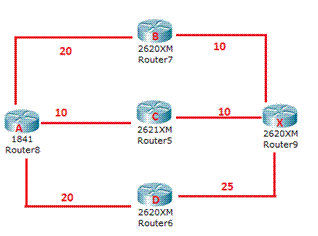EIGRP Load Balancing
EIGRP Load Balancing
In this tutorial, you will learn about different types of EIGRP load balancing.
EIGRP support two types of load-balancing, namely:
a) Equal cost load balancing
b) Unequal cost load balancing
Equal Cost Load Balancing: in situations where same route is learnt from different neighbors and has same metric then both these routes are installed and load balancing is done. Since the metric is same it’s known as equal cost load balancing. Equal cost load balancing is done automatically. We can have up to six equal paths for load balancing, the default paths are four.
Unequal Cost Load Balancing: If metrics are different then load balancing will not occur automatically. Thus a command called “variance” needs to be used. This command makes EIGRP load balance even on unequal metrics.
The variance used is a multiplier to the FD (Feasible Distance) of successor. The default variance value is 1, which means equal cost load balancing.
|
Network |
Neighbor |
FD |
AD |
|
X |
B |
30 |
10 |
|
C |
20 |
10 |
|
|
D |
45 |
25 |
Configure Unequal Load-balancing
As per the above topology, On Router A, we need to configure load balancing so the traffic reaches Router X.
By default the route that Router A would choose is through Router_C to reach network X because the metric has lowest FD (10+10 = 20)
If variance of 2 is configured on router A, then the router B is chosen to reach network X. As (20+10 = 30) < [ 2 x (FD) = 40]
Router D is not chosen for sending traffic and does not be part of load balancing as 25 > 20.
Router_A(config)# router eigrp 10
Router_A(config-router)#variance 2
Here, 2 used with variance command is the multiplier.
Read more


